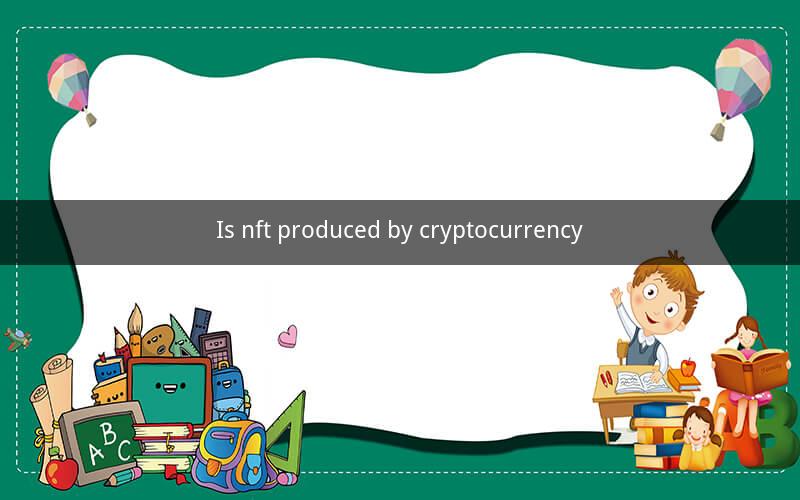
Directory
1. Introduction to Non-Fungible Tokens (NFTs)
2. Understanding Cryptocurrency
3. The Connection Between NFTs and Cryptocurrency
4. How Cryptocurrency Powers NFTs
5. The Role of Blockchain in NFTs
6. The Benefits and Challenges of NFTs
7. Examples of NFTs in the Cryptocurrency World
8. The Future of NFTs and Cryptocurrency
9. Conclusion
10. Frequently Asked Questions
1. Introduction to Non-Fungible Tokens (NFTs)
Non-fungible tokens, often abbreviated as NFTs, represent a unique digital asset that cannot be replicated or exchanged on a one-to-one basis. Unlike cryptocurrencies like Bitcoin or Ethereum, which are fungible and can be exchanged for a set value, NFTs are distinct due to their inherent uniqueness.
2. Understanding Cryptocurrency
Cryptocurrency is a digital or virtual form of currency that uses cryptography for security. It is decentralized, meaning it is not controlled by any central authority such as a government or financial institution. Bitcoin, the first and most well-known cryptocurrency, was introduced in 2009, and since then, thousands of other cryptocurrencies have emerged.
3. The Connection Between NFTs and Cryptocurrency
The connection between NFTs and cryptocurrency lies in the underlying technology of blockchain. Blockchain is a distributed ledger technology that enables the creation and transfer of digital assets securely and transparently. Cryptocurrency, being a digital asset, is built on blockchain technology, and NFTs are no exception.
4. How Cryptocurrency Powers NFTs
Cryptocurrency powers NFTs by providing the necessary infrastructure for their creation, ownership, and transfer. The primary cryptocurrency used for NFTs is Ethereum, which introduced smart contracts. Smart contracts are self-executing contracts with the terms of the agreement directly written into lines of code. This allows for the creation of unique digital assets that can be bought, sold, and tracked on the blockchain.
5. The Role of Blockchain in NFTs
Blockchain plays a crucial role in NFTs by ensuring their authenticity and scarcity. Each NFT is given a unique identifier on the blockchain, which cannot be altered or replicated. This immutable and transparent ledger provides a reliable way to verify the ownership and history of an NFT.
6. The Benefits and Challenges of NFTs
Benefits of NFTs include:
- Authenticity: The blockchain ledger ensures that each NFT is unique and verifiable.
- Scarcity: The limited supply of an NFT adds value and rarity to the asset.
- Ownership: NFTs offer a clear and secure way to prove ownership of digital assets.
- Interoperability: NFTs can be easily transferred and exchanged on different platforms.
Challenges of NFTs include:
- High Costs: The transaction fees for buying and selling NFTs can be significant, especially on popular platforms.
- Energy Consumption: The mining process for cryptocurrencies, including Ethereum, consumes a lot of energy.
- Scalability: The current blockchain infrastructure may not be able to handle the growing demand for NFTs.
7. Examples of NFTs in the Cryptocurrency World
NFTs have gained popularity across various industries, including art, music, gaming, and fashion. Some notable examples include:
- Beeple's "The First 5000 Days": This digital artwork sold for $69 million at a Christie's auction.
- GeeKyong's "CryptoPunks": These 10,000 unique digital characters have become highly sought-after collectibles.
- Decentraland: A virtual reality platform that allows users to create, experience, and monetize content and applications.
8. The Future of NFTs and Cryptocurrency
The future of NFTs and cryptocurrency looks promising, with potential for growth in various sectors. As blockchain technology continues to evolve, it may address some of the current challenges, such as energy consumption and scalability. Additionally, the integration of NFTs into traditional industries may lead to new business models and revenue streams.
9. Conclusion
NFTs and cryptocurrency are closely linked through blockchain technology. NFTs offer a unique and secure way to own and trade digital assets, while cryptocurrency provides the infrastructure to power these transactions. As the technology continues to develop, the potential for NFTs and cryptocurrency to revolutionize various industries is significant.
10. Frequently Asked Questions
Q1: What is an NFT?
A1: An NFT, or non-fungible token, is a unique digital asset that cannot be replicated or exchanged on a one-to-one basis.
Q2: How are NFTs different from cryptocurrencies?
A2: While both are digital assets, NFTs are unique and cannot be exchanged on a one-to-one basis, whereas cryptocurrencies are fungible and can be exchanged for a set value.
Q3: What is the role of blockchain in NFTs?
A3: Blockchain ensures the authenticity and scarcity of NFTs by providing an immutable and transparent ledger.
Q4: Can NFTs be transferred between different platforms?
A4: Yes, NFTs can be transferred between different platforms as long as they support the underlying blockchain technology.
Q5: Are NFTs only used for art and collectibles?
A5: No, NFTs have applications in various industries, including gaming, fashion, and real estate.
Q6: How do I buy an NFT?
A6: You can buy an NFT by creating a wallet, depositing cryptocurrency into it, and then using that wallet to purchase an NFT on a supported platform.
Q7: Are NFTs a good investment?
A7: Like any investment, the value of NFTs can fluctuate. It's important to do your research and consider the risks before investing in NFTs.
Q8: Can NFTs be copied?
A8: No, NFTs are unique and cannot be copied. Each NFT has a unique identifier on the blockchain.
Q9: How much does it cost to create an NFT?
A9: The cost to create an NFT can vary depending on the platform and the complexity of the project.
Q10: What is a smart contract?
A10: A smart contract is a self-executing contract with the terms of the agreement directly written into lines of code. It is used to create and manage NFTs on the blockchain.